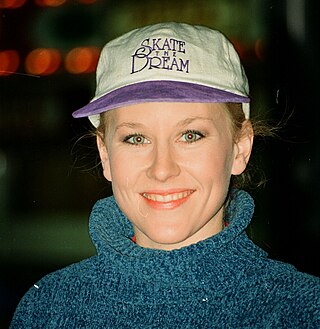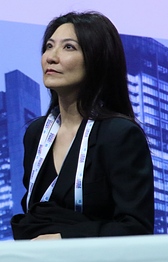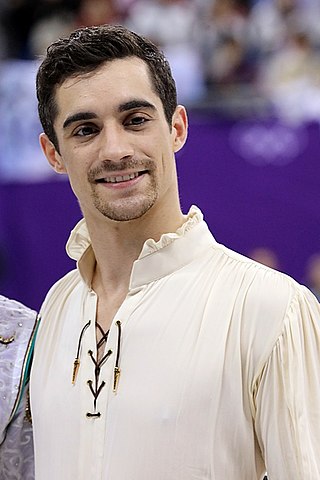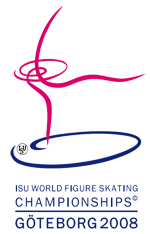Figure skating jumps are an element of three competitive figure skating disciplines: men's singles, women's singles, and pair skating – but not ice dancing. Jumping in figure skating is "relatively recent". They were originally individual compulsory figures, and sometimes special figures; many jumps were named after the skaters who invented them or from the figures from which they were developed. It was not until the early part of the 20th century, well after the establishment of organized skating competitions, when jumps with the potential of being completed with multiple revolutions were invented and when jumps were formally categorized. In the 1920s Austrian skaters began to perform the first double jumps in practice. Skaters experimented with jumps, and by the end of the period, the modern repertoire of jumps had been developed. Jumps did not have a major role in free skating programs during international competitions until the 1930s. During the post-war period and into the 1950s and early 1960s, triple jumps became more common for both male and female skaters, and a full repertoire of two-revolution jumps had been fully developed. In the 1980s men were expected to complete four or five difficult triple jumps, and women had to perform the easier triples. By the 1990s, after compulsory figures were removed from competitions, multi-revolution jumps became more important in figure skating.

Katarina Witt is a German former figure skater. A two-time Olympic champion, Witt is regarded as one of the greatest ladies' singles figure skaters of all time. Her Laureus profile states that "she is remembered most for her overall athleticism, her charismatic appeal and her glamorous image on the ice."

Midori Ito is a retired Japanese figure skater. She is the 1989 World champion and the 1992 Olympic silver medalist. She is the first woman to land a triple-triple jump combination and a triple Axel in competition. At the 1988 Calgary Olympics, she became the first woman to land seven triple jumps in an Olympic free skating competition. She is widely recognised as one of the best figure skaters of all time.

The figure skating events in 1998 Winter Olympics were held at the White Ring in Nagano. There were no changes in the format or scoring systems from 1994. Professionals were again allowed to compete, although they had to declare that intention and compete in ISU-approved events to do so. Previously, the ISU had been accused of rejecting Western professionals, while allowing Eastern Bloc state-sponsored "amateurs" to compete. Most of the top competitors by 1998 were now openly professional.

Viktor Vasyliovych Petrenko is a Ukrainian former competitive figure skater who represented the Soviet Union, the Unified Team, and Ukraine during his career. He is the 1992 Olympic Champion for the Unified Team. Petrenko became the first flagbearer for Ukraine.

Rosalynn Diane Sumners is an American former competitive figure skater. She was the World Junior champion in 1980, the U.S. National champion in 1982, 1983 and 1984, World champion in 1983, and won a silver medal at the 1984 Winter Olympics.
The figure skating events at the 1972 Winter Olympics were held at the Makomanai Skating Rink and the Mikaho Indoor Skating Rink.

Audrey Tiffany Chin is an American figure skating coach and former competitor. She is a two-time World bronze medalist (1985–1986), a two-time Skate America champion, and the 1985 U.S. national champion.
The Battle of the Brians was an informal name given by the press to the figure skating rivalry between Canadian Brian Orser and American Brian Boitano at the 1988 Winter Olympics in Calgary. This competition is considered one of the most memorable in men's figure skating history.

Javier Fernández López is a Spanish former figure skater. He is the 2018 Olympic bronze medalist, a two-time World champion, a two-time World bronze medalist, a seven-time European champion (2013–2019), a two-time Grand Prix Final silver medalist, a three-time Rostelecom Cup champion (2014–2016), a two-time Grand Prix in France champion (2016–2017) and an eight-time Spanish national champion.

Denis Yurievich Ten was a Kazakhstani figure skater. He was the 2014 Olympic bronze medalist, a two-time World medalist, the 2015 Four Continents champion, the 2017 Winter Universiade champion, and a five-time national champion of Kazakhstan.

The 2008 World Figure Skating Championships was a senior international figure skating competition in the 2007–08 figure skating season. Medals were awarded in the disciplines of men's singles, ladies' singles, pair skating, and ice dancing. The event was held at the Scandinavium arena in Gothenburg, Sweden from March 16 to 23.

A quadruple jump or quad is a figure skating jump with at least four revolutions. All quadruple jumps have four revolutions, except for the quadruple Axel, which has four and a half revolutions. The quadruple toe loop and quadruple Salchow are the two most commonly performed quads. Quadruple jumps have become increasingly common among World and Olympic level men's single skaters, to the point that not performing a quad in a program has come to be seen as a severe handicap. This phenomenon is often referred to as the "quad revolution". Since 2018, quadruple jumps have also become an increasingly common feature of women's skating, although they are not allowed under the International Skating Union ("ISU") rules in the ladies' short program. The first person to land a ratified quadruple jump in competition was Canadian Kurt Browning in 1988. Japanese skater Miki Ando became the first female to do so, in 2002.

Figure skating at the 2010 Winter Olympics was held at the Pacific Coliseum in Vancouver, British Columbia, Canada. The events took place between 14 and 27 February 2010.
The 1978 European Figure Skating Championships was a senior-level international competition held in Strasbourg, France from January 31 to February 5. Elite senior-level figure skaters from European ISU member nations competed for the title of European Champion in the disciplines of men's singles, ladies' singles, pair skating, and ice dancing.
The 1972 European Figure Skating Championships was a senior-level international competition held at the Scandinavium in Gothenburg, Sweden on January 11–15. Elite senior-level figure skaters from European ISU member nations competed for the title of European Champion in the disciplines of men's singles, ladies' singles, pair skating, and ice dancing.
The 1971 European Figure Skating Championships was a senior-level international competition held at the Hallenstadion in Zürich, Switzerland on February 2–7. Elite senior-level figure skaters from European ISU member nations competed for the title of European Champion in the disciplines of men's singles, ladies' singles, pair skating, and ice dancing.
The Axel jump or Axel Paulsen jump, named after its inventor, Norwegian figure skater Axel Paulsen, is an edge jump performed in figure skating. It is the sport's oldest and most difficult jump, and the only basic jump in competition with a forward take-off, which makes it the easiest to identify. A double or triple Axel is required in both the short program and the free skating segment for junior and senior single skaters in all events sanctioned by the International Skating Union (ISU).

Alexandra "Sasha" Vyacheslavovna Ignatova is a Russian figure skater. She is the 2022 Olympic silver medalist, the 2021 World bronze medalist, a European silver (2022) and bronze (2020) medalist, the 2019 Grand Prix Final bronze medalist, the 2019 Skate Canada champion, the 2019 Rostelecom Cup champion, the 2019 CS Ondrej Nepela Memorial champion, the 2021 U.S. Classic champion, and the 2021 Skate America champion. Domestically, she is the 2022 Russian national champion, the 2019 silver medalist, and the 2020 and 2021 bronze medalist. At the junior level, she has been a two-time Junior World Champion, the 2018 Junior Grand Prix Final champion, the 2019 Junior Grand Prix Final silver medalist, a four-time champion on the Junior Grand Prix series, and a two-time Russian Junior national champion.
The 2019–20 Grand Prix of Figure Skating Final and ISU Junior Grand Prix Final was held from December 5–8, 2019 at the Torino Palavela in Turin, Italy. The combined event was the culmination of two international series — the Grand Prix of Figure Skating and the Junior Grand Prix. Medals were awarded in the disciplines of men's singles, ladies' singles, pair skating, and ice dance on the senior and junior levels.











